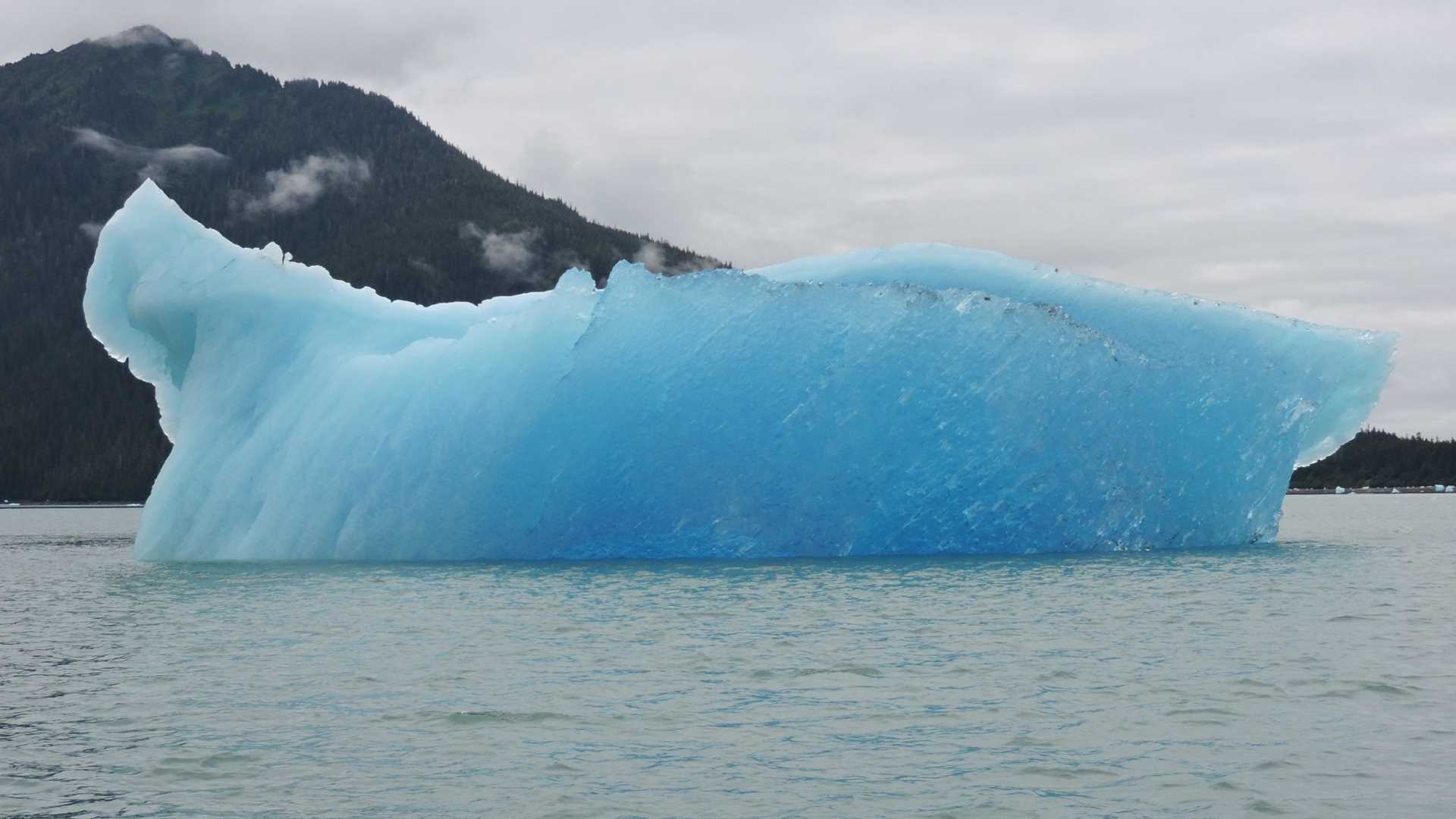National Geographic Sea Lion entered LeConte Bay early in the morning and found a safe anchorage. It was soon after decided that we would board expedition watercraft for a bit of local exploration with a mid-morning brunch to follow. A tidewater glacier (one that ends in a sea-connected body of water), the face or “tongue” of Le Conte was still many miles up the fjord. However, it commonly calves ice, which then floats out of the fjord and into the open waters of the southeast Alaskan Archipelago.
Our early morning boat excursions allowed firsthand magnificent views of LeConte’s ice calvings up close. We saw brash ice (crumbly stuff), growlers (chunks that rise out of the water less than one meter), bergy bits (pieces that extend between one and five meters above the surface), and ice bergs (large ice formations ascending more than five meters in height). Many of the impressive ice bergs were deep blue in color (Figure A). We learned that the blue color results from very dense, clear chunks of ice allowing visible light to enter deeply into or completely through them. The ice has to be clear, with very little or no air bubbles contained inside, so that longer wavelengths of visible light (red, orange, yellow, and green) are absorbed, and only blues are allowed to escape the ice. This is not an optical illusion, because it clearly shows in photographs and is the same phenomenon that makes deep, clear sea water appear blue. Some of the shapes reminded us of animals, including a turtle, a whale, a swan, and a merganser duck (Figure B). The entire bay was surrounded by typical, dense, verdant forested mountains.
By early afternoon, we reached Petersburg, a town long associated with Norwegians, many of whom founded the community generations ago to work in the fishing industry. The Sons of Norway Community Hall is located in a prominent position in the harbor (Figure C). In fact, Petersburg was established here to take advantage of the inexhaustible supply of high-quality, dense ice from LeConte Glacier, which could be used to freeze and transport fish to western American cities in Washington, Oregon, and California.
We spent most of the remaining day here. Many enjoyed a beautifully maintained U.S. Forest Service trail on nearby Kuprianof Island that took us through a fairytale-like forest of draped moss, complete with a young porcupine on a small tree near the trail (Figure D), past dense berry bushes, to a boardwalk that led us out into a bizarre muskeg (Figure E). This was different than anything we had seen thus far and allowed us to observe some bonsai-like shore pines and Sitka spruce trees that were obviously stunted from trying to grow in saturated, acidic soil composed primarily of sphagnum moss. Everyone was duly impressed by the two species of little carnivorous sundew plants (Figure F) that were common in the sphagnum moss ground cover. Actually, the sphagnum moss is what maintains the muskeg here, because it acts like a massive, deep, squishy sponge cover that holds the water in place. Many puddles of dark, acidic water are exposed, proving to us that this is not a place we would want to try to walk, even with rubber boots.
Guests enjoyed exploring Petersburg at their own pace, while a handful partook in floatplane rides out over the nearby glacier. The fliers came back with glowing reports and photographs of a huge river of ice that was heavily crevassed. A few went bike riding, while others explored the piers and wharves of the harbor and admired the many and varied types of fishing boats, as well as lots of interesting marine growth on the pilings. Later, our National Geographic Young Explorers helped the undersea specialist retrieve a plankton tow just off one of the floating piers (the findings of which were shown on the video microscope in the lounge during recap).
It was a full and satisfying day in Southeast Alaska, but one more highlight was in store for us on board. Dinner tonight consisted of fresh Dungeness crabs collected this afternoon in Petersburg (along with other fare, of course). Afterward, the long, full day closed with an illustrated lecture on glaciers and ice. Phew!






